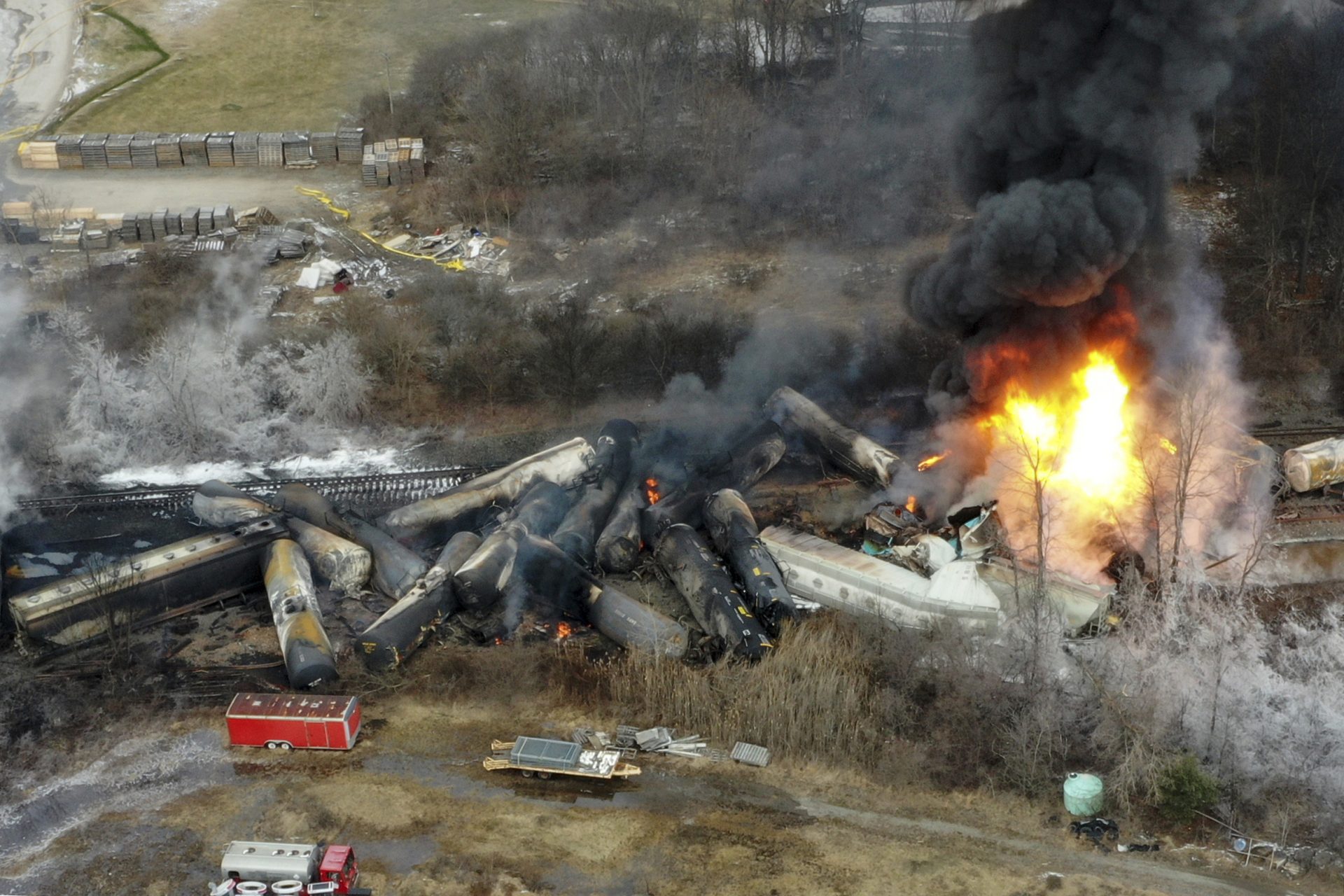|
Only have a minute? Listen instead
Getting your Trinity Audio player ready...
|

This is Rail Safety Week, an annual effort to focus on the need to work toward making train-related accidents as rare as possible.
That goal might be more apparent this year, when several high-profile derailments have occurred in Montana, Florida and along the Mississippi River on the Iowa-Wisconsin border, as well as a major 50-car derailment in February in Ohio that created a fire and toxic chemical spill that forced evacuations throughout the surrounding area.
Railway safety is especially critical along the U.S.-Mexico border, where trains constantly cross back and forth delivering billions of dollars worth of goods between the two countries.
Safety Week is also recognized in Canada and Mexico, the latter of which has a special problem with its trains. Thousands of migrants seeking to reach the U.S. border from Central and South America are hopping onto northbound trains. The problem has grown to the point that Mexico’s largest railroad, Ferromex, this week suspended 60 rail routes and U.S. Customs and Border Protection closed one of the two bridges at Eagle Pass.
Most rail traffic these days is freight, although Amtrak continues to provide passenger train service to several parts of this country, and people have long touted high-speed trains as a mass-transit option that might reduce the number of cars, trucks and buses on our nation’s roadways ranging from California to New York and even including the Rio Grande Valley. Our nation’s first private high-speed rail line in a century is scheduled to begin running this week between Miami and Orlando, Florida, and the company, Brightline, plans to establish another line linking Las Vegas and Southern California by 2027.
Rail transport is safer than driving on roads, although it is less convenient, and the infrequent accidents can be major, involving more people than the more common auto accidents that usually involve just one or a few cars. As the Ohio derailment shows, the risk of toxic contamination in freight train accidents is an added risk, as larger volumes of hazardous chemicals can be involved in a train accident. One rail car carries enough material to fill four semi-trailers.
Fortunately, Valley officials have worked to reduce rail-related risks. In Cameron County, for example, lines were rerouted from downtown Brownsville border crossings to a dedicated bridge west of town and to a peripheral line that goes around the city to the Port of Brownsville. Talk of making similar efforts to move rails out of the heart of McAllen have been discussed, although securing easements in that metropolitan area are more challenging.
Moving the lines promotes safety in two ways — by reducing the risk of a derailment and spill affecting populated areas, and by reducing the number of railroad crossings. Collisions with cars and trucks are among the leading cause of train accidents, along with track defects and human error. The U.S. Department of Transportation reports that some 5,800 auto-train collisions occur every year.
Maintaining rail safety is more than an industry concern. All residents need to recognize that we all share the duty of keeping accidents as low as possible.




